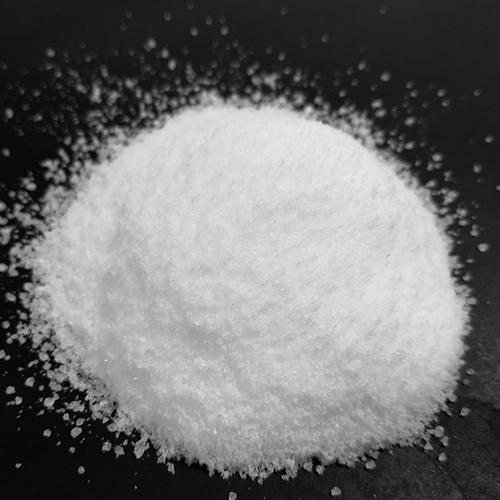[alias] octadecanoic acid, octadecanoic acid, fatty wax
[Molecular formula]C18H36O2

[Property]A high-grade saturated fatty acid, the pure product is white soft flakes with luster. The relative density is 0.9408 (20°C), the melting point is 69-71°C, the boiling point is 383°C, and the refractive index is 1.4299 (80°C).
The industrial product is white or yellowish granular, a mixture of stearic acid and palmitic acid, contains a small amount of oleic acid, and has a slight buttery smell. Slightly soluble in cold water, easily soluble in benzene, toluene, chloroform, carbon tetrachloride, carbon disulfide, amyl acetate, etc., also soluble in ethanol and acetone. Industrial products are divided into first-class products (or type 200, formerly known as triple-pressed stearic acid, after three pressings), second-class products (or type 400, formerly known as double-pressed stearic acid, after second pressing) and third-class products (or 800 type, formerly known as one-press stearic acid, after one press or no press). The first and second grades are white waxy solids, and the third grades are pale yellow waxy solids. Stearic acid rarely exists alone in nature, and often exists in the form of glycerides, such as glyceryl tristearate, which exists in most animal and vegetable oils, especially butter. Stearic acid is an organic acid that can react with alkali to produce sodium stearate, which is a kind of soap.
[Application] It has a wide range of uses. In the cosmetics industry, it is an indispensable raw material for the manufacture of general emulsified products. It is used to prepare creams, Cold cream, foundation cream, shaving cream, hair cream and skin care lotion, etc. In the rubber industry, it is a vulcanization active agent for natural rubber, synthetic rubber and latex, and is also used as a softener. Used as a plasticizer, stabilizer and lubricant in the plastics industry. In the textile industry, it is used as a lubricant for yarns and as a softener for mercerizing creams. It is also used in the manufacture of release agents, polishing pastes, defoamers, metal flotation agents, paint flatting agents, stencil polishing agents, textile waterproofing agents, etc. It is a solvent for oil-soluble pigments. It is also a raw material for the manufacture of more fatty acid esters and stearates such as methyl stearate, glyceryl stearate, calcium stearate, potassium stearate, and lead stearate.
[Cylinder Method] The hardened oil obtained by hydrogenation of cottonseed oil, palm oil, etc. is decomposed into tallow and suet It is obtained after hydrolysis in the presence of sulfonated oleic acid, benzene, naphthalene and other mixtures, and then distilled, squeezed (or not squeezed), pickled, and decolorized.
[Safety and Protection] This product is non-toxic, and it is also packed in a woven bag lined with a plastic bag or a carton. Each bag (or Each box) net weight 25kg, 50kg. Store and transport according to general chemical regulations, store in a cool and dry place.

 微信扫一扫打赏
微信扫一扫打赏

